Déjà vu. For decades, the eastern part of the Democratic Republic of Congo has been a battlefield, with particular carnage taking place in the North Kivu Province. In late 2008, rebel general Laurent Nkunda’s National Congress for the Defense of the People (CNDP) effectively rattled Goma’s gates – the largest city in the East, and a major economic hub that shares its border with Rwanda. In a last minute deal, General Nkunda was turned in by his own staff and arrested in Rwanda, effectively ending the war.
Now a steady escalation of violence has become the norm, destabilising the region and resulting in the deaths of millions and leaving millions more without shelter, food and family.
Videos by VICE
In late April 2012, defections from the the Congolese Army (FARDC) to the forces of ICC-indicted General Bosco “The Terminator” Ntaganda (formerly a colonel in Laurent Nkunda’s CNDP) began in North Kivu, culminating in a real mutiny: Hundreds of military and police – most of ethnic Tutsi origin –joined Bosco in protest over Kinshasa’s failure to live up to promises made in 2009, when CNDP rebels “integrated” into the FARDC.
They massed in Masisi, West of Goma, but didn’t stay for long. Loyal FARDC forces closed in and chased them off. They regrouped and established a base at Runyonyi, close to the Rwandan border in Rutshuru Territory. The movement was officially christened M23, and the group claimed the agreements of March 23rd, 2009 between the CNDP and Kinshasa had been broken, and therefore were null and void.
From the hills of Runyonyi the M23 began their rebellion in earnest, launching attacks against the FARDC until they took Bunagana near the Ugandan border. Things got worse for Kinshasa, as the government wasn’t prepared or was unwilling to restart negotiations with the CNDP.

In July 2012, Rutshuru and Kiwanja towns fell to the rebels, and they set up an administration running parallel but opposed to Kinshasa’s official government. After repeated calls by regional and international organizations for negotiations and peace talks, the M23 announced an offensive with the aim of taking Goma. Over the next three months tensions continued to rise as the rebels planned their attack.
On November 15th, 2012 the rebels attacked Kibumb – around 40 km north of Goma – and a front line was effectively established between the M23 and the FARDC. As the M23 attempted to advance, the FARDC, with heavy weapons and the aid of MONUSCO (the UN peacekeeping mission stationed in the Congo), succeeded in pushing the rebels back to a position in Virunga National Park, further north past Kimbumba.
Early the following morning, the rebels counter-attacked and pressed forward until they conquered Goma on November 20th. Heavy fighting took place in Goma, and both forces suffered losses in terms of materiel and personnel. Civilian casualties were in the tens.
On November 21st, the M23’s leadership ordered all government forces and police to report to a nearby football stadium and surrender. Thousands complied and soon the stadium was filled to capacity. Civilians cheered as Colonel Vianney Kazarama, spokesman for the M23, called on the population to unite in the fight against DRC president Joseph Kabila’s regime. Civil servants resumed their posts and police returned to Goma’s streets. As the international press corps descended on Goma, life began to appear to be back to “normal.”
Determined after their success in Goma, the rebels advanced toward Sake – a little over 16 miles west of Goma. While advancing on Thursday, rebels met resistance from a FARDC-allied coalition of militias who controlled the town for a few hours before withdrawing to the surrounding hills. In the aftermath, Sake had completely emptied; its population running toward Goma. On their way, the angry crowd vented their rage on foreign journalists, stoning one vehicle and roughing up a few reporters.
Azama, a woman who had been displaced from Sake during the fighting, said “Children who were going to school yesterday will not go today. So when shall we develop? If you people don’t advocate for us, it will never end.”
On Friday, M23 publicly displayed a huge cache of arms seized from FARDC positions, including rocket launchers and other heavy weapons. The following day, reports reached Goma of a massive buildup of FARDC troops in Minova, about 30 miles to the southwest. The soldiers were reportedly drunk and looting the town. Despite the humanitarian and social catastrophe in the region, as of Saturday, the Kinshasa government and M23 have failed to reach an agreement that would both benefit the population and put an end to the carnage.
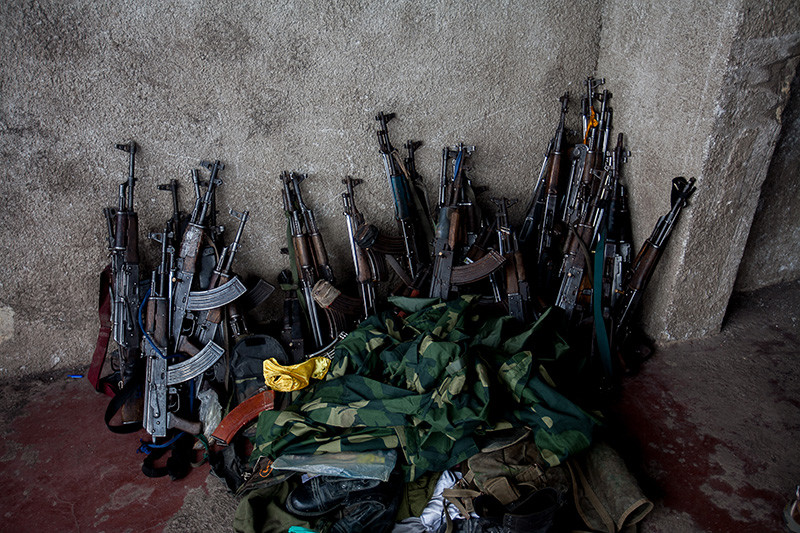
Weapons collected from surrendering police on November 21, 2012.
Tim Freccia
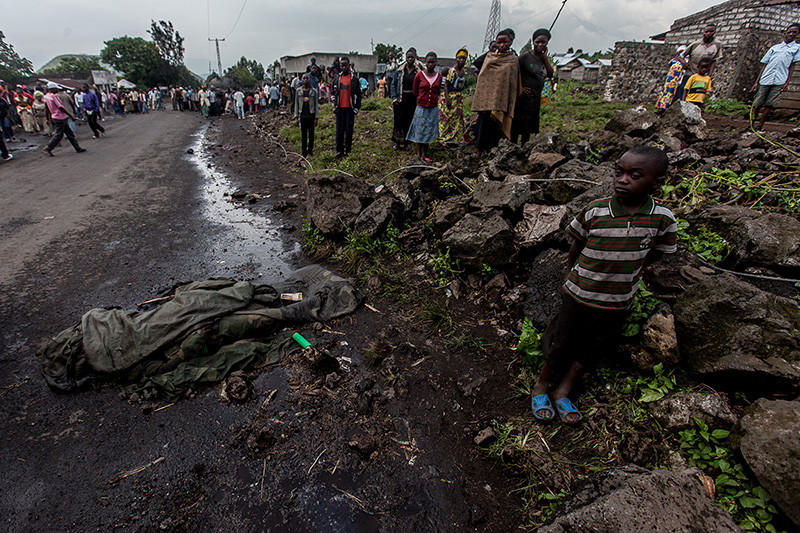
A young boy stands by the corpse of a slain FARDC soldier in Goma on 21 November, 2012.
Tim Freccia
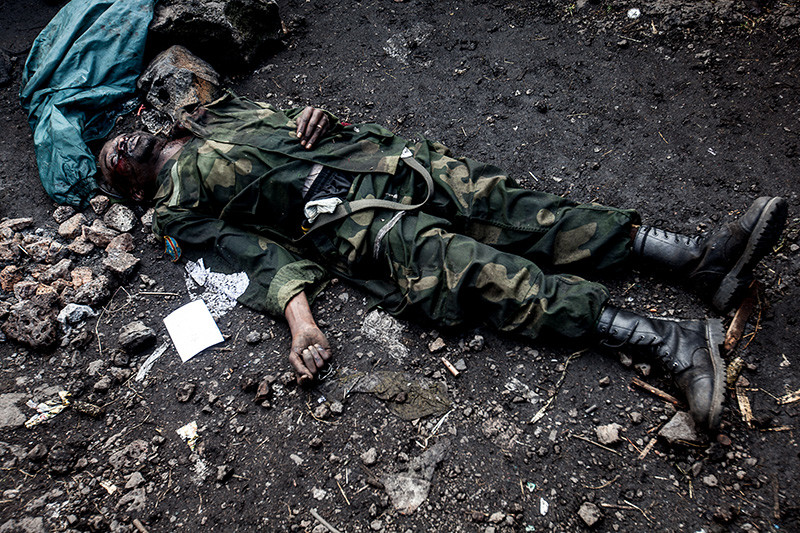
The corpse of a slain FARDC soldier lies at the side of the road on November 21, 2012.
Tim Freccia
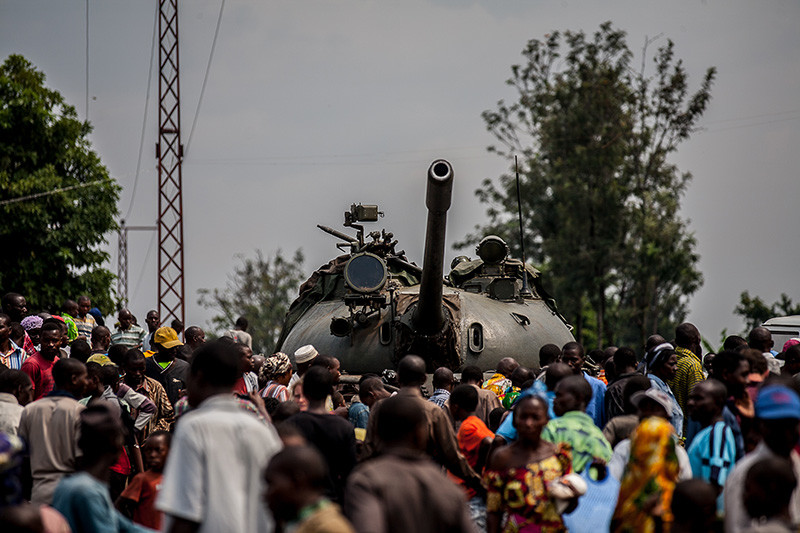
An immobilsed FARDC tank stands at the side of the road on November 21, 2012.
Tim Freccia
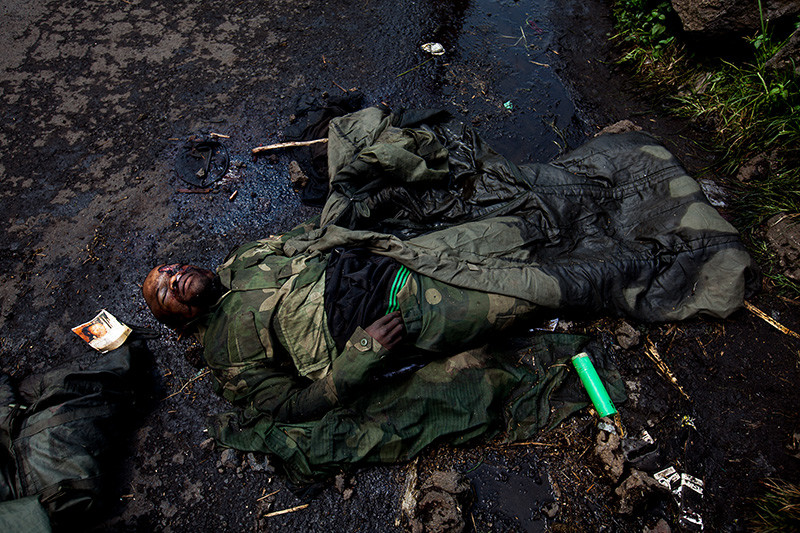
The corpse of a slain FARDC soldier lies at the side of the road.
Tim Freccia
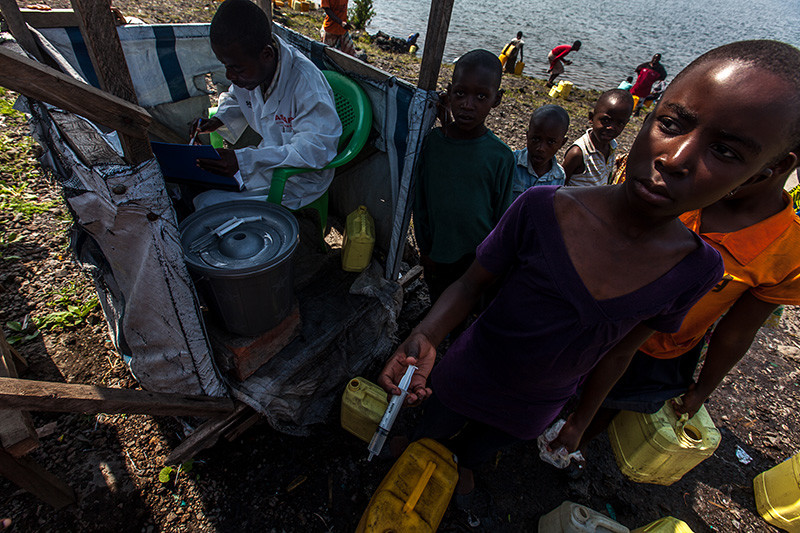
A girl holds a syringe of chlorine, used to sterilise water drawn from Lake Kivu in Goma.
Tim Freccia

A girl carries waterfrom Lake Kivu in Goma on 22 November 2012. Water supplies were cut as rebels entered Goma on November 20, 2012, forcing residents to draw water from the lake.
Tim Freccia
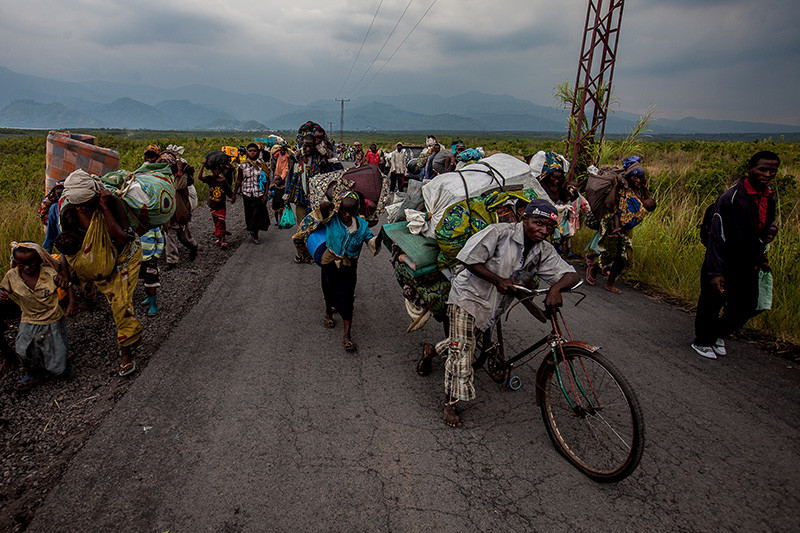
Residents of Sake flee fighting between Mai Mai and M23 on November 22, 2012.
Tim Freccia
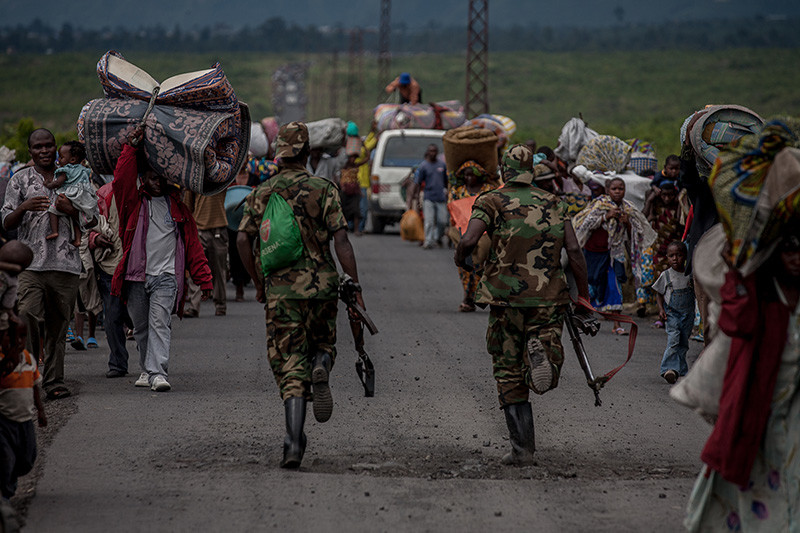
M23 soldiers race toward Sake, to fight Mai Mai comabatants, supported by FARDC troops.
Tim Freccia
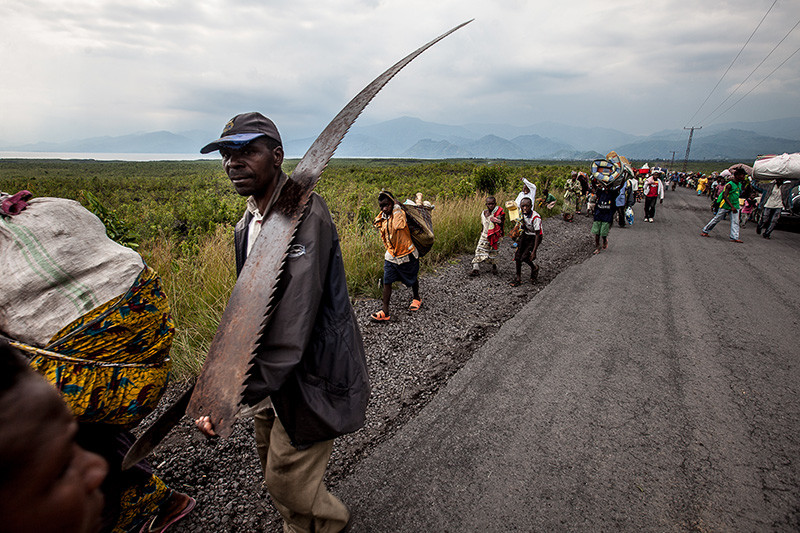
Residents of Sake flee.
Tim Freccia
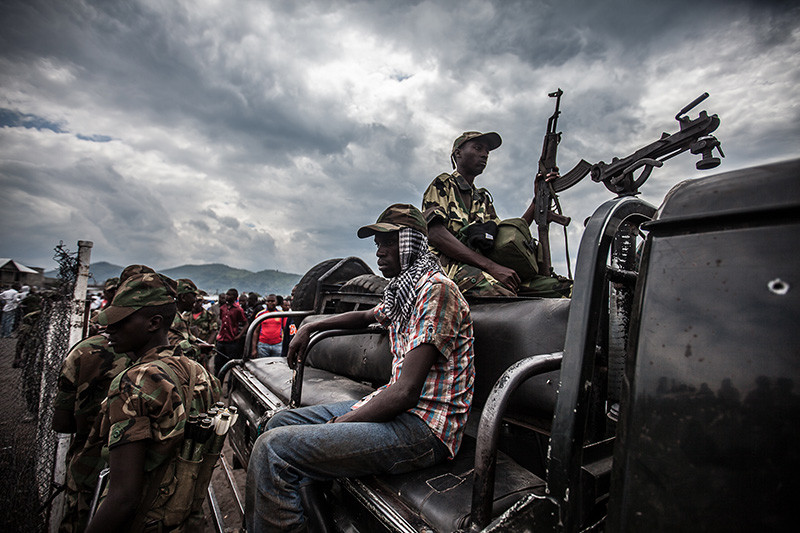
M23 soldiers guard Goma’s football stadium on November 21, 2012, as Lt. Col. Vianney Kazarama gives a speech to a crowd of thousands, declaring Goma to be under the control of M23, urging civil servants to return to work.
Tim Freccia
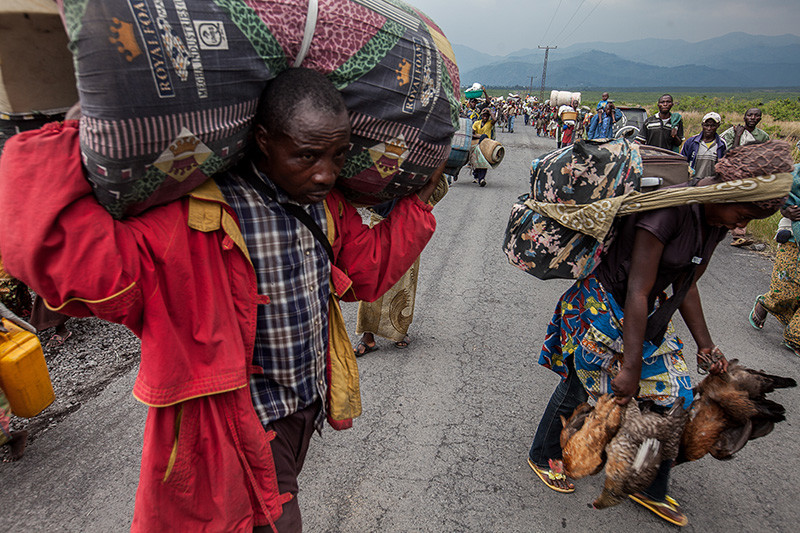
Residents of Sake flee fighting between Mai Mai and M23 on November 22, 2012.
Tim Freccia
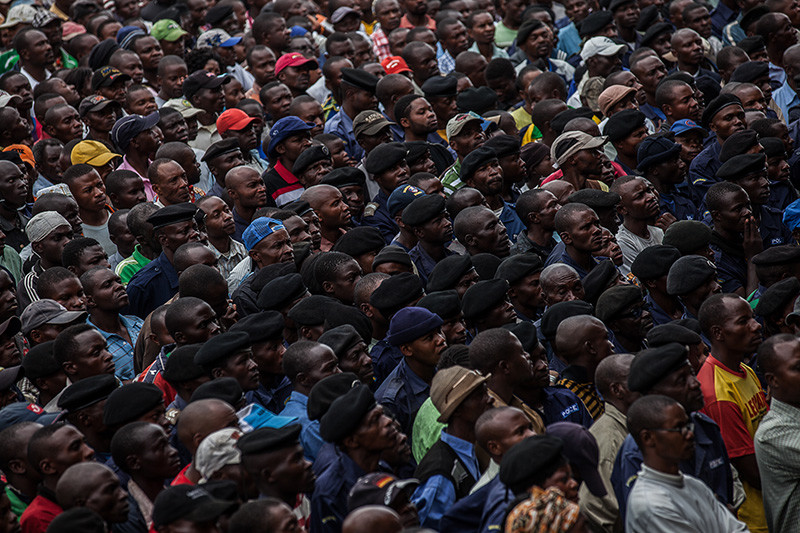
Surrendered police assemble in Goma’s football stadium as M23’s spokesman Lt. Col. Vianney Kazarama give a speech on November 21, 2012.
Tim Freccia

Residents of Sake flee.
Tim Freccia
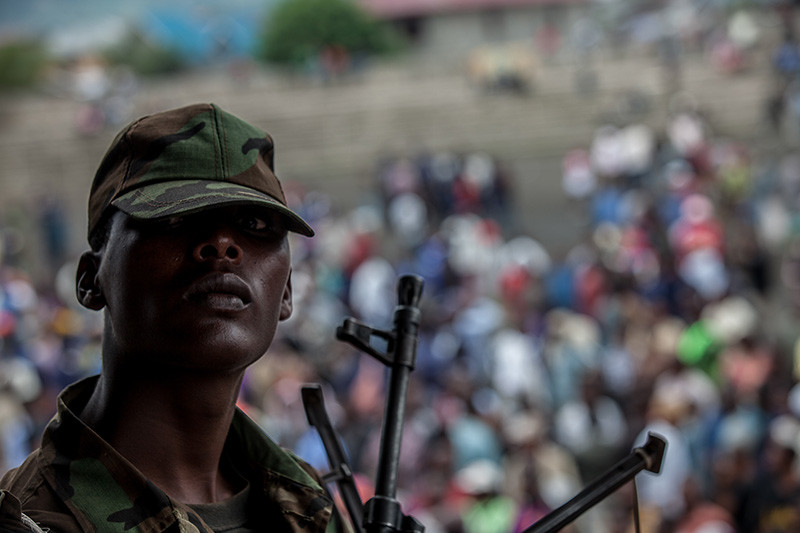
An M23 soldier guards Goma’s football stadium on November 21, 2012,
Tim Freccia
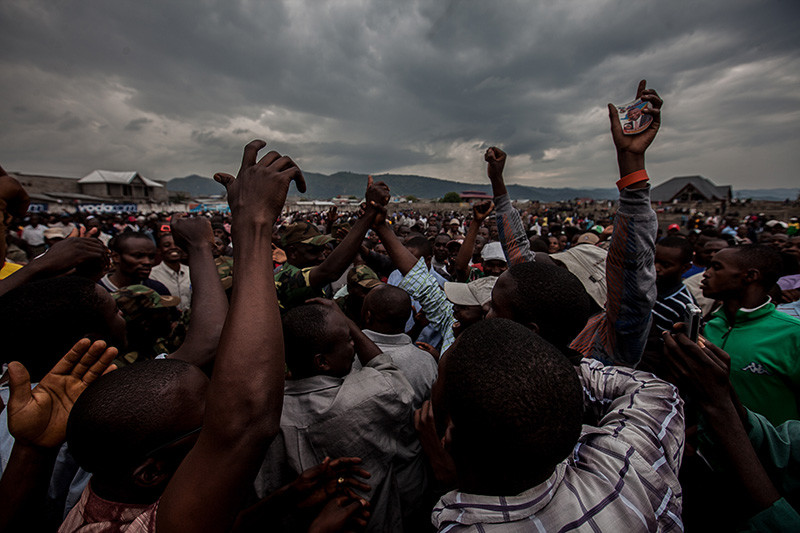
Crowds cheer at Goma’s football stadium. The image clutched in the foreground is of Vital Kamerhe, a contender for the presidency and apparently endorsed by M23.
Tim Freccia

A woman fills a syringe of chlorine, used to sterilise water drawn from Lake Kivu in Goma on November 22, 2012. Water supplies were cut as rebels entered Goma on November 20, 2012.
Tim Freccia
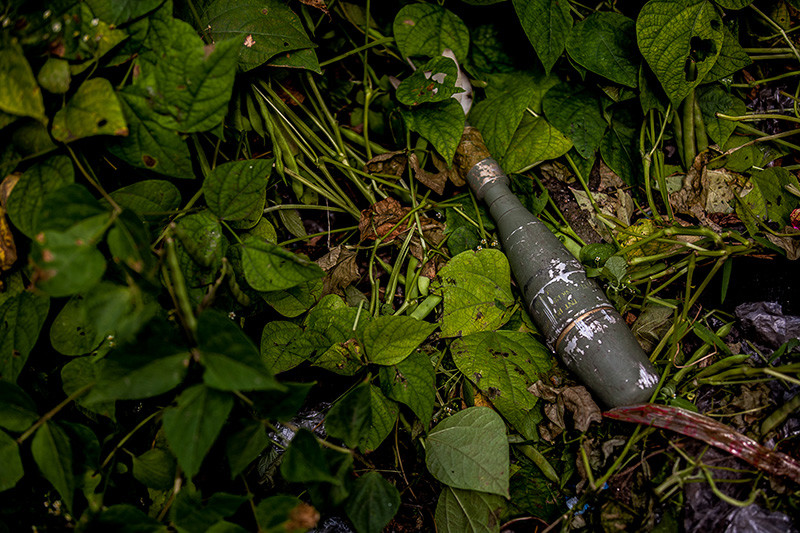
A discarded ordinance.
Tim Freccia
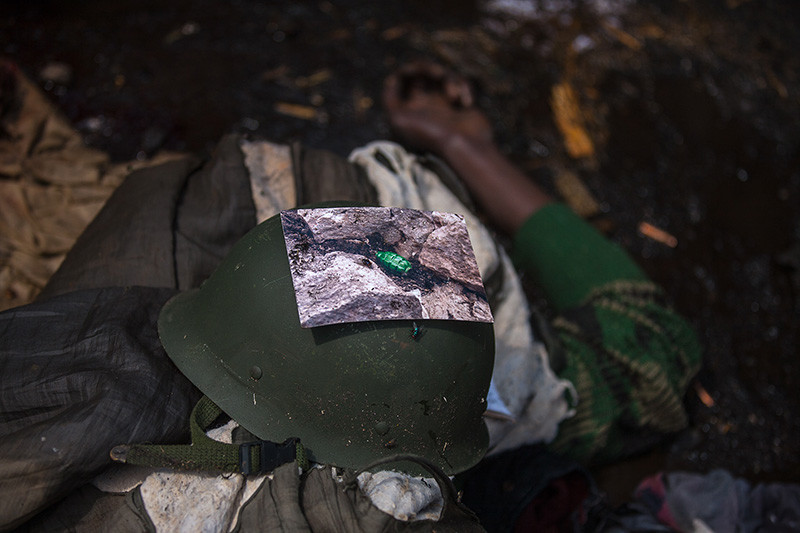
The photographic print of a grenade on the helmet of a slain FARDC soldier.
Tim Freccia
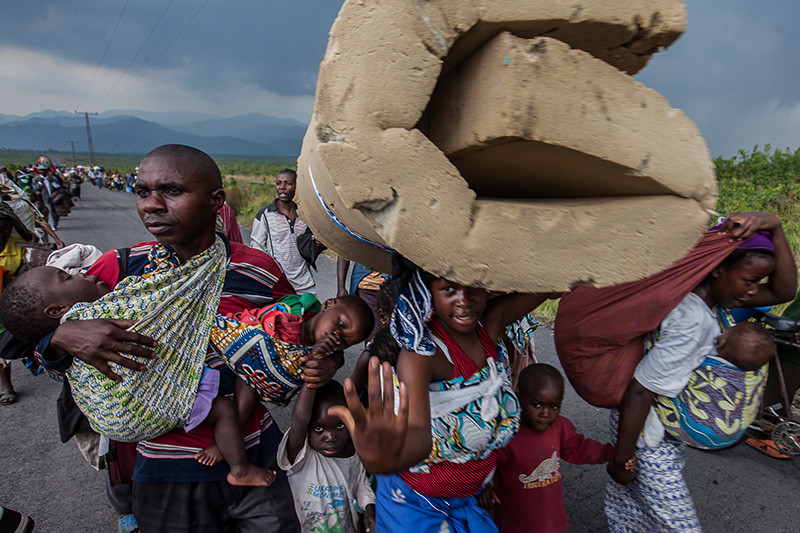
Residents of Sake flee.
Tim Freccia

